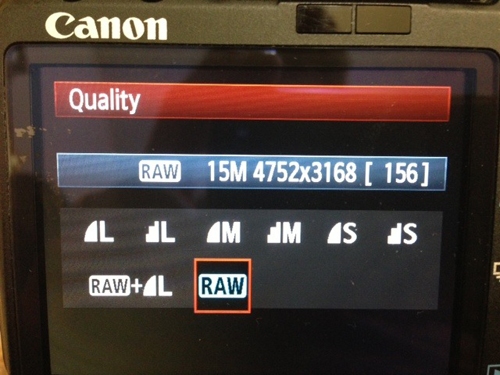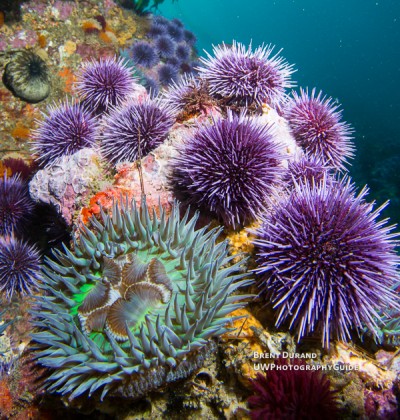Why You Should Shoot In RAW
Mar 27
By: Brent Durand
Most advanced digital cameras offer the choice to shoot in RAW or JPEG (or both). We hear that RAW is “better” but know that JPEGs are the photo currency of the Internet. So why should we shoot in RAW if the final images are JPEGs anyways?
In short, RAW files capture more information at the time of shooting, allowing for more flexibility during post processing. Think of RAW as all the data recorded on the camera’s image sensor, and JPEG as a final product. Unless your images are perfect straight out of the camera (remember that your camera’s LCD is not precisely accurate in showing colors and brightness), it’s not wise to jump immediately to the very last step. Using JPEGs in-camera immediately compresses the image data to create the JPEG file.

Sea anemone and purple urchins shot in RAW and saved as a small jpeg file.
As underwater photographers, we should be taking advantage of post-processing tools (my belief is in moderation and keeping images true-to-life, but any art is subjective). RAW files record a wider range of brightness, which allow for a number of adjustments in white balance, exposure and contrast. The second benefit is that you can edit RAW images without permanently changing the original file. The changes are essentially “laid over” the original file and you can reset the image at any time to edit from scratch. The last major benefit is that you can choose your final product once done editing the RAW file. This includes image size, quality, file type (JPEG, TIFF, PSD, etc), color space and much more.
Sure, RAW files take up more hard drive space, but memory is very affordable and constantly getting cheaper.
Check back soon for my next entry on understanding sRGB and Adobe RGB color space.





Related Articles
Popular Articles